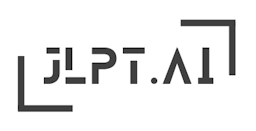

N3
音読み:fu
訓読み:tsukeru, tsuke, tsukeru, tsuku
フfu
つ.けるtsukeru
つ.けtsuke
つ.けるtsukeru
つ.くtsuku
Attach, affix, accompany
Imagine a sticky note with an attachment, indicating that there is something additional or extra along with the main content.
The kanji '付' is frequently used in the JLPT N3 level and is essential for understanding vocabulary and kanji combinations related to attachment or affiliation.
名前を書いてください。私はこの書類に署名を付けます。
Please write your name. I will put my signature on this document.
なまえをかいてください。わたしはこのしょるいにしょめいをつけます。
namae o kaite kudasai. watashi wa kono shorui ni shomei o tsukemasu.
手紙に写真を添付して送りました。
I attached a photo to the letter and sent it.
てがみにしゃしんをてんぷしておくりました。
tegami ni shashin o tenpushite okurimashita.
宿題に付箋をつけておいてください。
Please attach sticky notes to the homework.
しゅくだいにふせんをつけておいてください。
shukudai ni fusen o tsukete oite kudasai.